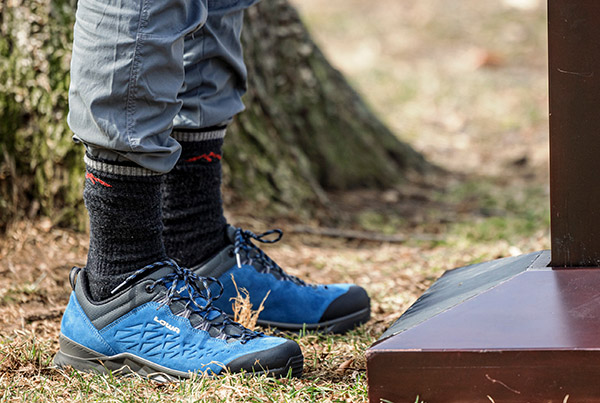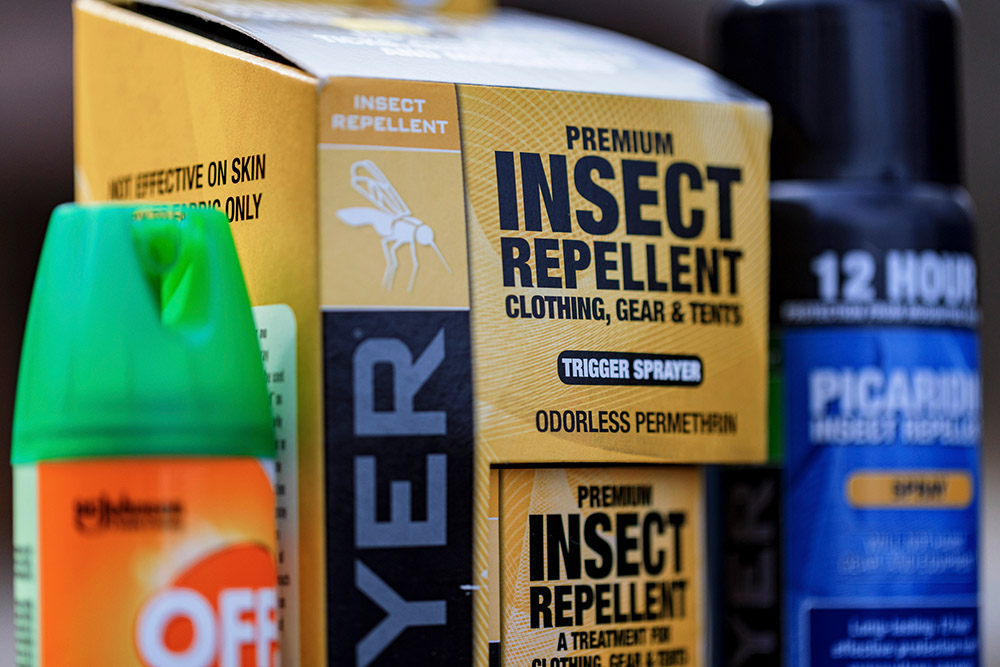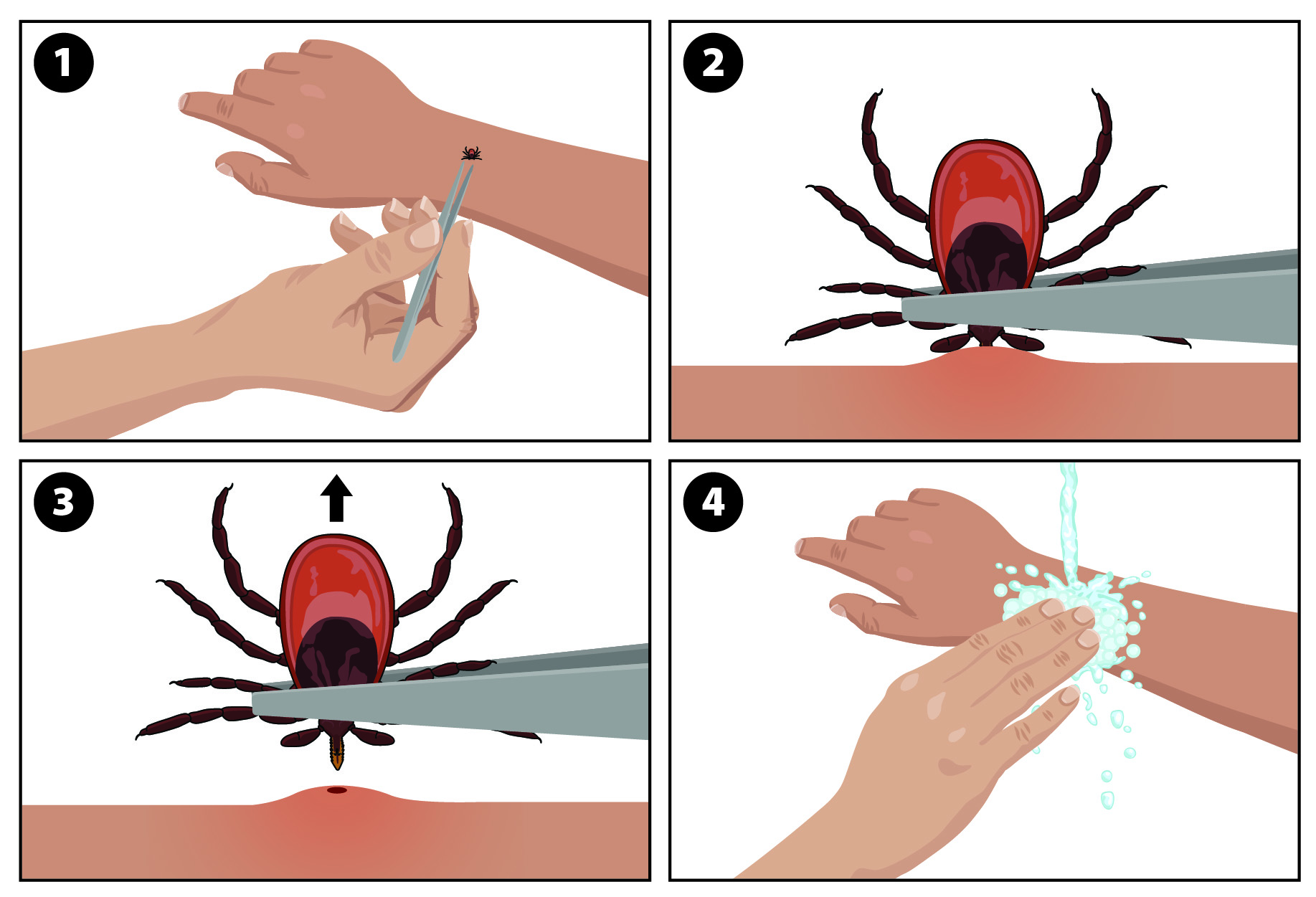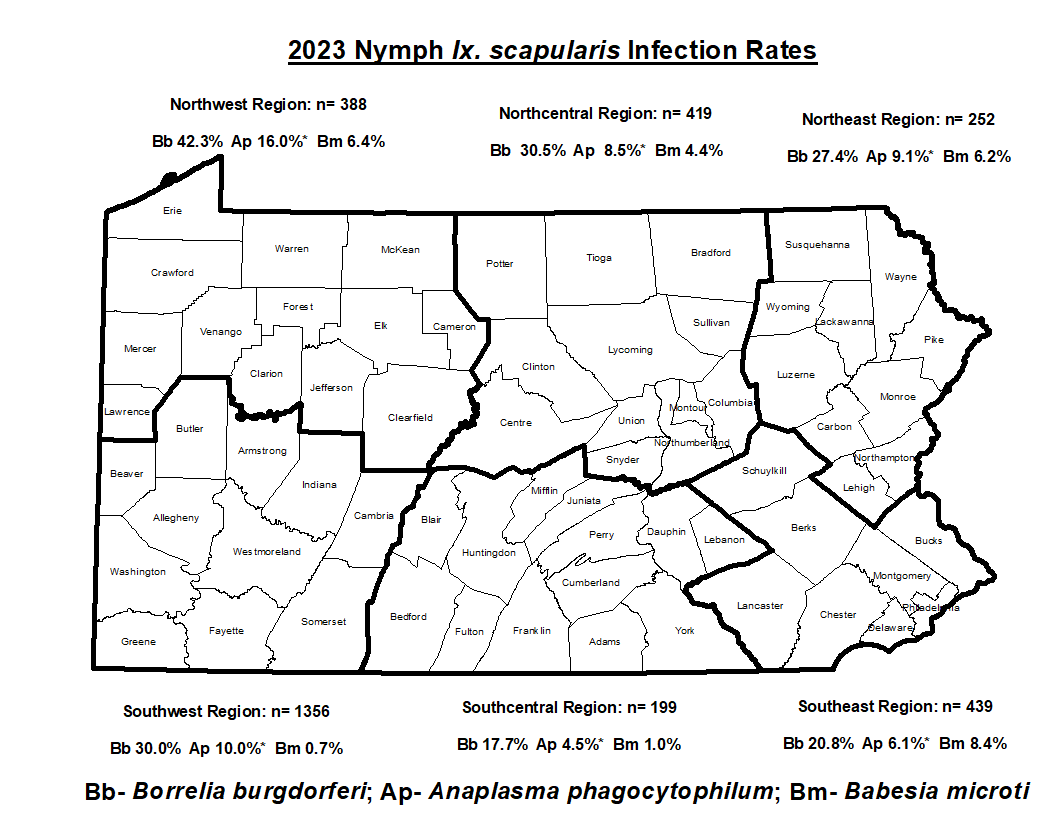Lyme Disease: Borrelia burgdorferi, Borrelia mayonii
Lyme disease is the most common vector-borne disease in the United States. Lyme disease is caused by the bacterium Borrelia burgdorferi and rarely, Borrelia mayonii. It is transmitted to humans through the bite of infected Blacklegged ticks. Typical symptoms include fever, headache, fatigue, and a characteristic skin rash called erythema migrans. If left untreated, infection can spread to joints, the heart, and the nervous system.
Borrelia mayonii are a type of bacteria recently found in North America that can cause Lyme disease. These bacteria are different from the three types of bacteria that cause most cases of Lyme disease worldwide.
Based on limited information, illness caused by B. mayonii appears similar to that caused by B. burgdorferi, but with a few differences. Like B. burgdorferi, B. mayonii causes fever, headache, rash, and neck pain in the days after infection and can cause arthritis after a few weeks of illness. Unlike B. burgdorferi, B. mayonii can also cause nausea and vomiting; large, widespread rashes; and a higher concentration of bacteria in the blood.
Human Granulocytic Anaplasmosis: Anaplasma phagocytophilum
Anaplasmosis is a disease caused by the bacterium Anaplasma phagocytophilum. These bacteria are spread to people by tick bites primarily from the Blacklegged tick.
People with anaplasmosis will often have fever, headache, chills, and muscle aches.
Babesiosis: Babesia microti
Babesiosis is caused by microscopic parasites that infect red blood cells and are spread by the Blacklegged Tick in PA. Babesia infection can range from asymptomatic to life threatening. Most infections cause fever, chills, sweats, and fatigue. Although many people who are infected with Babesia do not have symptoms, for those who do effective treatment is available.
Deer Tick Virus: (Powassan Virus Lineage II)
Powassan virus is spread to people by the bite of an infected tick. Although still rare, the number of reported cases of people sick from Powassan virus has increased in recent years. Most cases in the United States occur in the northeast and Great Lakes regions from late spring through mid-fall when ticks are most active. There are no vaccines to prevent or medicines to treat Powassan virus disease. Reduce your risk of infection from Powassan virus by avoiding ticks.
Powassan virus can be transmitted in as little as 15 minutes after tick attachment.
Hard Tick Relapsing Fever: Borrelia miyamotoi
Borrelia miyamotoi is a type of spiral-shaped bacteria that is closely related to the bacteria that cause tickborne relapsing fever (TBRF). It is transmitted by the bite of an infected Blacklegged tick in PA. Sign and symptoms include fever, chills, severe headache, and fatigue.
Ehrlichiosis: Ehrlichia chaffeensis, E. ewingii, or E. muris
Ehrlichiosis is the general name used to describe diseases caused by the bacteria in the United States. These bacteria are spread to people primarily through the bite of infected ticks including the lone star tick (Amblyomma americanum) and the blacklegged tick (Ixodes scapularis).
People with ehrlichiosis will often have fever, chills, headache, muscle aches, and sometimes upset stomach. Doxycycline is the treatment of choice for adults and children of all ages with ehrlichiosis.
Spotted fever group rickettsioses (spotted fevers): Rickettsia rickettsii, R. parkeri
Rocky Mountain Spotted Fever (RMSF) is a bacteria most often transmitted by the bite of the American Dog Tick in PA. RMSF can be rapidly fatal if not treated within the first 5 days after symptoms occur.
Rickettsia parkeri Rickettsiosis is a bacteria that can transmitted by the Gulf Coast Tick in PA and is closely related to RMSF. They have similar signs and symptoms, including fever, headache, and rash. Differing from RMSF there typically appears an inoculation eschar at the site of the tick attachment.
Clothing
When outdoors it is important to protect yourself from ticks. Wearing light colored clothing makes it easier to see any ticks that may be crawling on your clothing. Tucking your shirt into your pants and your pants into your socks can help keep ticks on top of your clothing and off your skin, this will increase the likelihood of you seeing the tick before it can attach. Using repellents that can be sprayed onto your clothing, like permethrin, will repel and kill any ticks that you come into contact with. The heat from a dryer can also kill ticks that may be crawling on your outdoor clothes.

Tick Checks
Checking yourself for ticks after being outdoors is important to reduce the risk of tickborne disease. The longer a tick is attached the more likely it is to transmit pathogens it may be carrying. Ticks like moist, dark, thin-skinned areas to attach. The following are important areas to focus on when conducting a tick check.
- Hairline
- Behind ears
- Armpits
- Waistband
- Between legs
- Behind knees
Image source: CDC
Repellants & Insecticides
Use an EPA approved insect repellent for tick prevention.
DEET is a repellant used for ticks and mosquitoes. It can be sprayed directly on skin and/or clothing to help keep ticks away.
- Spray on yourself and clothing, repels ticks
- 20% to 30% DEET most effective
- DEET by itself tested between 85%-89% effective at repelling ticks.
Permethrin is an insecticide that is sprayed on your clothes only. It will kill ticks on contact.
- Spray on clothing off body, let dry, kills ticks with contact
- Good for up to 6 washes
Other repellents:
- Picardin
- Oil of Lemon Eucalyptus

Tick removal
- Locate where the tick is attached. Use fine tipped tweezers or a tick key for removal. It is important to remove a tick as soon as possible, the longer a tick is attached increases the likelihood of contracting a tickborne disease.
- Grasp the tick at its head or as close to the skin surface as possible.
- Pull upward with steady and even pressure. Do not twist or jerk the tick.
- After thoroughly removing the tick, clean the bite area and your hands with rubbing alcohol or soap and water.
Do no use household remedies such as burning the ticks, Vaseline, or using nail polish. Always remove the tick as soon as possible.

Image source: CDC
Habitat management: Landcsaping techniques
The following are a few things that can be done around the home to minimize ticks and tick host habitat:
- Keep grass trim, long grass provides questing habitat for ticks
- Rake leaves, leaves provide habitat for nymphal and larval ticks
- Cut back edge habitat, edge habitat hanging into your yard is a great place for ticks to quest
- Increase sunlight, ticks dry out easily so high sunlight areas will deter ticks
- Remove clutter, cluttered areas provide habitat for mice and other small mammals that act as a host
- Keep playground equipment, decks, and patios away from yard edges and trees
- Stack wood neatly and away from the home
- Mulch barriers provide a barrier between your yard and the woods, they also serve as a mental reminder that past the area is tick risky habitat
- Discourage unwelcome animals from entering your yard by constructing fences

*Anaplasma phagocytophilum infection rates do not differentiate between deer and human variant.
These are the results for the most recent nymphal Ixodes scapularis statewide active surveillance survey that was conducted from April through August of 2023 delineated by PA Department of Health Regions. The total number of specimens collected in the region are denoted by the “n.” Individual ticks were tested for the presence of 3 pathogens, including Borrelia burgdorferi, Anaplasma phagocytophilum, and Babesia microti.
Archived Maps
The Tick Program staff does not respond to personal property complaints concerning ticks. However, if you would like more information or to express concerns, see contact information below. Concerns will be addressed by conveying educational materials related to habitat management to reduce ticks on your property and personal protection measures that you can take to reduce the likelihood of being bitten by ticks.
Contact: RA-EPTickInfo@pa.gov